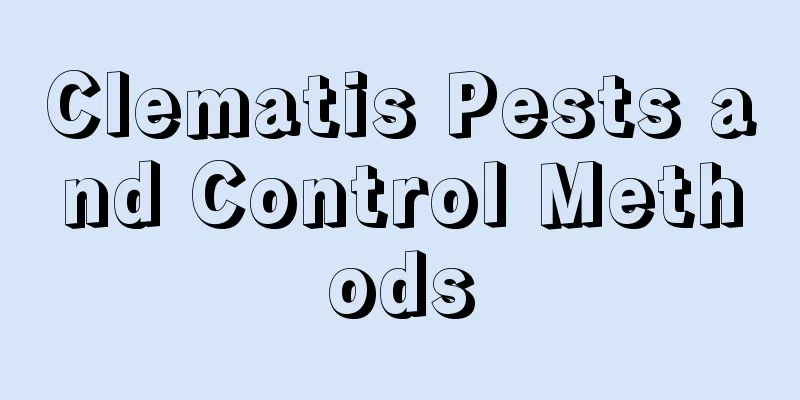Clematis Pests and Control Methods

Clematis Pests: AphidsBoth black and green aphids will attack clematis. Spring to early summer is the peak season for aphids, so special attention should be paid. Aphids usually gather at the top of young shoots, on stems or on the back of leaves, eating the leaves and flesh of the plants. A large amount of insect feces will contaminate the plants. After the clematis enters the growing season in spring, you should always observe whether there are aphids on the leaves. If the situation is serious, you can spray some insecticide. Note that if the bottom of the plant is too dry, it will cause aphids to gather, so the surrounding environment should be kept moist to reduce the occurrence of aphids. Clematis Pests: CaterpillarsMost caterpillars emerge in early spring and prefer to be active at night, feeding on new leaves and flower buds. Properly increasing the light at night can reduce the gathering of caterpillars, or spraying pesticides can kill pests. Clematis Pests: Leaf MinerThe larvae of leaf miners often shuttle between leaves, forming one or more irregular gray-white curves on the leaves, forming spots at the ends. Leaf miners will not have a significant impact on the growth of the plant, but will only reduce the ornamental value of the leaves. In the early stages of leaf miner infestation, the affected leaves can be cut off and thrown away. Note that the spots at the end of the curve of the leaf surface contain the larvae of the leaf miner. Be sure to cut off the spots completely and destroy them. If the infected area of the plant is large, remove the leaves and spray the plant with appropriate amount of pesticide. Clematis Pests: SnailsSnails are mollusks that prefer warm and humid environments. They reproduce in large numbers in spring and devour tender leaves and buds, causing serious damage to plants. But they are afraid of light and heat. They hide in humid, shaded areas during the day and come out to look for food at night. Wherever it crawls, it will leave glowing mucus, which not only affects the growth of the plant but also looks unsightly. Spraying 70 to 100 times the concentration of ammonia water at night can kill pests on a large area and also achieve the purpose of fertilization. Alternatively, choose diatomaceous earth and charcoal ash and bury it at the roots or spray it with water. |
>>: Flowers also suffer from insect damage
Recommend
What soil is suitable for growing blueberries?
Blueberry soil Blueberries prefer to grow in acid...
How to prune pomegranates (diagram)
Pomegranate pruning time Pomegranates can be prun...
Can Osmanthus fragrans be planted in the ground?
Can Osmanthus fragrans be planted in the ground? ...
Snake fruit cultivation methods and precautions
1. Maintenance methods 1. Temperature: If the tem...
What fertilizer to use for mint? Two things to pay attention to when fertilizing mint
1. Base fertilizer When planting mint, you need t...
Is Impatiens poisonous?
Is it poisonous? The answer is yes! Impatiens is ...
Gardenia cutting method
1. Cutting time The best time to take cuttings is...
The flower language and legend of bougainvillea
Flower Language The first language of bougainvill...
What to do if gardenia grows too tall
1. It has not been trimmed for a long time (1) Sp...
Cultivation methods and precautions of variegated vine Changchun
Growth habit If you want to grow them well, you m...
Breeding methods and precautions of high snow wheel
1. Maintenance methods 1. Temperature: Gaoxuelun ...
How to grow Euphorbia milii
1. Sufficient sunlight Euphorbia milii particular...
Top 10 Indoor Ornamental Plants
Generally speaking, most plants suitable for indo...
How to grow the succulent Pink Lady
Farming methods Growth habit The first step to cu...
Put a pot of "evergreen" in the living room, water it when you are free, and the leaves will be green and lush
Every plant has its own charm. For example, green...









